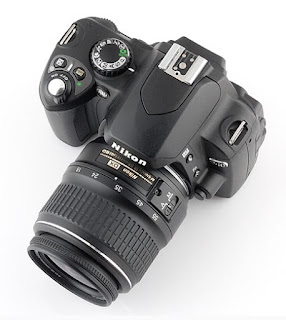History of Digital Cameras - Digital
camera technology is directly related to and evolved from the same
technology as when it serves to record the images on television. In
1951, the first video tape recorder (VTR) taking pictures of the
television cameras, and then converts the information into an electrical
impulses (digital) and store the information into the magnetic tape.
 |
| History of Digital Cameras |
Bing
Crosby laboratories (the research team funded by an engineer named
Vrosby and led by John Mullin) made an early version of the VTR. In
1956, VTR technology was perfected (the VR1000 made by Charles P.
Ginsburg and the Ampex Corporation) and is commonly used by the
television industry. Between television / video cameras and digital cameras use CCD (Charged Couple Device) to set the color and intensity of light. During that time, the era of digital cameras has started at a furious pace.
In 1981, Sony introduced their first commercial electronic camera called Mavica. The images recorded onto a mini disc and then put into a video reader that is connected to a television monitor or color. Although
it can not be said Mavica digital camera, it is actually a modification
of a video camera that takes photos spontaneously.
 |
| History of Digital Cameras |
Since
the mid-1970s, Kodak has several discoveries about
solid-state/kejernihan for image sensors that convert light into digital
images for use on a professional level and household consumers. In
1886, Kodak scientists to introduce the world's first megapixel sensor,
where the sensor is capable of recording 1.4 million pixels that could
produce a 5x7-inch digital photo-quality print is good at that. In
1987, Kodak released seven products for recording, storing,
manipulating, electronic transmission, and print something like the
image of an object.
 |
| History of Digital Cameras |
In
1990, Kodak developed the photo CD system and proposed the first time
in the world to establish digital color standards in the computer and
computer peripherals. In
1991, Kodak released the first time for the professionals, a system in
which photography Digital Camera System (DCS), which is aimed at photo
journalist. The camera is a Nikon F-# which comes with 1.3 Megapixels sensor.The
first digital cameras for the consumer-level market that worked with a
home computer via USB (Unit Serial Bus) is a QuickTake 100 camera Aplle
(February 17, 1994), the Kodak DC40 camera (28 March 1995), the Casio
QV-11 (with LCD monitor, late 1995), and the Sony Cyber-Shot Digital Still Camera (1996). However,
Kodak entered the era with the aggressive marketing campaign to promote
the DC40 and to help introduce the idea of digital photography to the
public.
Kinko's
and Microsoft is working with Kodak Digital to create a digital image
using the software in a variety of workplace and photo kiosk, where
customers are allowed to produce photo CDs, digital pictures, and
documents can then be added to their computer. IBM is working with Kodak membaut internet-based network image exchange.
 |
| History of Digital Cameras |
Hewlett-Packard
(HP) is the first company in terms of making their product the color
Inkjet Printer, thereby completing the coloring system for printing
images from a digital camera. So began the change of a digital camera with a new shape. Digital
cameras such as conventional cameras, available models Point-And-Shot
and digital single lens reflex or Digital Single Lens Reflector (DSLR).
Update : 07/03/2015
Comments
Post a Comment
Silakan berkomentar sesuai dengan topik. Jangan menyisipkan link pada komentar dan jangan sampai komentar Anda masuk komentar SPAM.
Jangan salahkan saya bila komentar Anda dihapus !